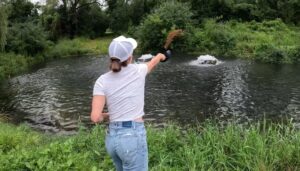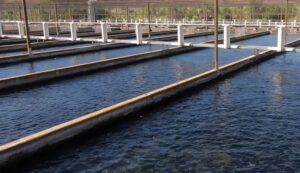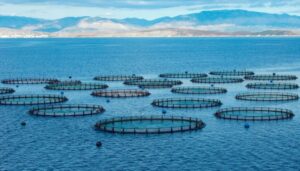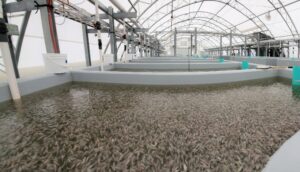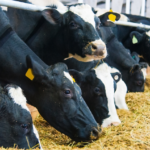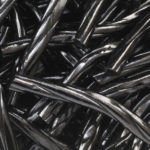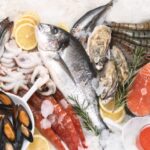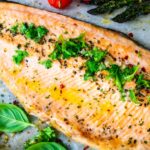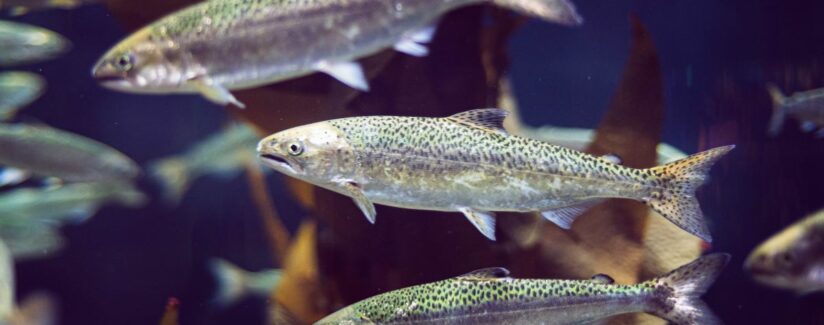
How Does Aquaculture Affect Water Supplies?
Almost half of the fish and seafood around the world is produced through aquaculture. “Aquaculture” may be a new term for many people, who likely have questions about what it is and if fish farming is sustainable.
We turned to two experts to learn more. Dr. Jacob Bledsoe is an Assistant Professor & Aquaculture Extension Specialist in the Department of Animal, Veterinary, & Food Sciences and Aquaculture Research Institute at the University of Idaho. Dr. Deborah Bouchard is the Director of the University of Maine’s Aquaculture Research Institute and an Associate Professor of Aquatic Animal Health with UMaine’s Cooperative Extension.
We asked Dr. Bledsoe and Dr. Bouchard about the sustainability of aquaculture. Also, we wanted to learn more about how fish farms affect water – quality, quantity and utilization.
What are the most common types of aquaculture systems used?
Dr. Bledsoe: The most common systems for rearing fish are earthen ponds, raceways (rectangular cement ponds), open-net pens or cages in natural waters (i.e., lakes, reservoirs, oceans) and tank-based recirculating aquaculture systems (RAS). The systems used vary, depending in large part, on the species being raised.
Dr. Bouchard: Aquaculture is farming in water and includes land-based recirculating (RAS), raceway and flow-through systems. Gear used in the coastal and open ocean environments include net pens, baskets or cages. Freshwater pond aquaculture is the most commonly used system worldwide for a variety of species.
Learn more about RAS systems in this video from the Northern Aquaculture Demonstration Facility – University of Wisconsin-Stevens Point.
Which system is the best?
Dr. Bledsoe: Each aquaculture production system has its benefits, although continued advances in RAS are especially promising, as it involves recycling of water, allowing for more efficient water reuse with minimal environmental impact.
Dr. Bouchard: Each system has its own set of advantages, suitable for different species and environmental conditions. For instance, pond systems are widely used for species like catfish, carp and crayfish, while land-based recirculating systems are ideal for controlling environmental conditions and siting farms inland.
Do fish farms use water from local water sources?
Dr. Bledsoe: Water usage varies depending on the production system and location of the farm. In many cases, the water used by fish farms can be effectively recycled and reintroduced to the local watersheds, serving downstream needs without significant diversion or depletion of the resource. In the United States, for example, flow-through systems are often regarded as non-consumptive water users, as they do not substantially reduce the water resource available to the watershed. Pond systems, while variable in water usage, are built for maximum efficiency and are usually not established in water-scarce areas. RAS are engineered to minimize water demand, showcasing high water reuse rates. Conversely, net pens and cages placed in natural water bodies do not require external water supplies and when properly managed and sited, these operations can maintain or even enhance the condition of the surrounding aquatic ecosystem. It is also worth noting that a fish farm’s water use and water rights are under the regulatory authority of local, state or U.S. federal laws.
Dr. Bouchard: Both finfish and shellfish farms use water from local sources such as rivers, lakes and the ocean. The choice of water source would depend on the type of system, species being farmed and local and federal water regulations. It is important to manage water use responsibly to ensure sustainability and minimize environmental impact. In Maine, all aquaculture farms that discharge into public watersheds must meet strict discharge guidelines established by local ordinances, Maine’s Department of Environmental Protection and the federal Clean Water Act. Finfish farmed in net pens and shellfish farms both use the ambient water to provide food and habitat.
How does aquaculture affect water quality?
Dr. Bledsoe: Aquaculture’s impact on water quality primarily stems from nutrient and waste discharge. With diligent management practices – including optimized feed and feeding strategies and effective waste handling – the potential negative effects on water quality can be substantially mitigated.
Dr. Bouchard: The impact of aquaculture on water quality varies based on farming practices, the cultivated species, the specific water body and environmental conditions. Aquaculture can influence water quality primarily through processes like nutrient loading, chemical usage and waste production.
What are fish farmers doing to improve aquaculture’s impact on water quality?
Dr. Bledsoe: In the U.S. and many other countries, aquaculture operations are subject to stringent regulatory requirements, including obtaining various environmental permits, undergoing regular inspections and conducting thorough environmental impact assessments to ensure compliance and minimize ecological footprints. Aquaculture has seen significant advancements in feed formulation, feeding techniques, water filtration, waste management and even selective breeding, all aimed at reducing environmental impacts. These ongoing improvements underscore the commitment to enhancing water quality and ensuring the sustainability of local effluent-receiving bodies of water.
Dr. Bouchard: Responsible aquaculture practices, encompassing waste management, controlled feed administration, decreased use of chemical inputs and strategic site selection, among others, play a pivotal role in mitigating these potential impacts. Ongoing research and innovations in aquaculture focus on developing environmentally friendly practices. Technological advancements, such as RAS, are instrumental in optimizing water use and minimizing pollution, reflecting a positive trajectory towards sustainable aquaculture practices with reduced environmental footprint.
Some are concerned that fish farms use a lot of water and electricity. What is being done about this?
Dr. Bledsoe: Addressing concerns about water and electricity usage in aquaculture, fish and seafood growers are leveraging technological innovations such as RAS to enhance sustainability. RAS technology minimizes water usage by recycling it efficiently, significantly reducing the demand on local water resources. As in other sectors, advances are also being made to improve overall energy efficiency, further mitigating electricity consumption concerns. Additionally, integrating alternative energy sources into aquaculture operations and optimizing feed management practices contribute to lowering the environmental footprint of fish farming. Strategic siting of new farms is also crucial, taking into account the availability of local water and electricity resources to minimize impact. RAS enables more flexible location decisions, allowing farms to be located closer to large urban markets, thereby reducing transportation distances and associated carbon emissions. Through these measures, aquaculture is making strides towards more sustainable and environmentally friendly practices.
This content is sponsored by BestFoodFacts.org and United Soybean Board.
















